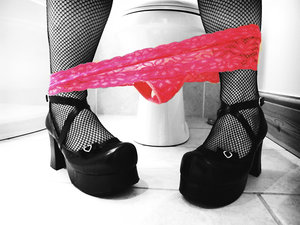 I want to be more than frank: for the many times I have found myself on the countryside(my other home as an African), I have always known that it was time to lower my personal sanitation-compatibility level from maybe 6 out of 10, to just 1, if such a scale exists.
I want to be more than frank: for the many times I have found myself on the countryside(my other home as an African), I have always known that it was time to lower my personal sanitation-compatibility level from maybe 6 out of 10, to just 1, if such a scale exists.Don’t even ask me if the term sanitation-compatibility exists because I really do not know! For I am yet to see a single flash toilet in the whole of my district!
But there is nothing to shout about the fact that sub-Saharan Africa is the world leader in open-field or bush defecation, if you may. Why sub-Saharan Africa?
The AfricaSan+5 (2nd African Conference on Sanitation and Hygiene) concluded last week on a declaration, which to me was on a sad note because it is untenable (at least for now) as it is unrealistic: that all African governments should declare their countries as being Open-Defecation Free.
African nations cannot declare Open-Defecation Free while 36% of Africans are without any form of toilet? University of Leeds’ Professor Duncan Mara no wonder called the eThekwini Declaration a “motherhood and apple pie” on his blog. In Ethiopia, about 87 per cent and in Chad about 91 per cent do not have access to toilets.
UNICEF representative, Clarissa Brocklehurst, said the problem of open-field defecation was at its worst on the continent because one in every four Africans (or 234 million people!) were still defecating in the bush, in plastic fling bags or the nearest ditch, perpetuating the spread of diarrhoea and other hygiene-related illnesses. In Kibera, a one-million population slum in Nairobi, the fling bags are aptly called “flying toilets”!
Muammar Gaddafi’s Libya had the best sanitation, with 97% of its population enjoying access to proper toilet facilities. The same story was replicated in the rest of north Africa, including Algeria.
2008 being the UN International Year of Sanitation, there is nothing to celebrate. Consider this: nearly 600 million people, more than 60% of Africa’s population, currently do not have access to safe sanitation (read toilets);an estimated 1 million Africans die every year from sanitation, hygiene and drinking water-related diseases.
Globally, it is even a worse picture; 2.6 billion, including 980 million children, almost half the world’s population, having no access to a toilet is a daily reality. It has a profound impact on health. The spread of water-borne diseases like diarrhoea kill more than 2.2 million people every year – most of them children.
The International Year of Sanitation 2008 was established by the United Nations General Assembly in December 2006 to accelerate progress towards meeting the Millennium Development Goal target of reducing by half the proportion of people living without access to improved sanitation by 2015.
According to UNICEF, improved sanitation includes clean, safe toilets, waste water management and hygiene promotion, all of which prevent the transfer of pathogens in human excreta. When not treated safely, it adversely impacts health, often deprives children of getting an education, and impedes social and economic development.
Nonetheless, two aspects on the issue of toilets and the general sanitation situation in Africa are increasingly emerging: the first is that the implementation of sanitation programs using appropriate technological options which are acceptable to the recipient communities will be crucial in causing a reversal in sanitation trends in Africa.
The other is that cheaper toilet facilities are essential to improving sanitation-compatibility on the continent. There is an urgent need for the construction of simple, low-cost, affordable toilets that are easy to build and maintain and are relatively free of odors and flies - more of a dry toilet. This dry toilet can be a contained unit that requires no plumbing and collects urine and feces and must be emptied by humans on a regular basis.
But it has been argued elsewhere that the simple, “drop, thud” pit latrine was a better option, largely because water is an enigmatic problem in most African communities particularly in the rural areas. And a flash toilet will come with another problem: tissue paper.
Tissue paper is a luxury that most people cannot afford! According to figures published by World Watch in 2005, in North America, the per capita consumption of tissue paper was 23 kg while in Western Europe it was 13.8 kg. Asia consumed about 1.8 kg and Africa the least, 0.4 kg, largely due to cost and local prevailing custom.
In November 2007, the World Toilet Association in South Korea held an international conference, to focus specifically on the global shortage of toilets and sanitary facilities.
The Global Dry Toilet Association of Finland runs a program where sponsors can support a low-tech sanitation scheme in rural Zambia. The program hopes to bring ecological sanitation to villages in the Kaloko region of Zambia, one of the poorest countries in the world. Almost 60% of the 10,000 residents have no toilet facilities at all, 40% use basic pit latrines where wastes soak into the soil.
But for many Africans, the question remains: does it matter at all?
Ecowordly: Bush Defecation or Dry Toilets. Does It Matter?




2 comments:
Even the US is not open defecation free.
I have long felt that the American toilet was the greatest advancement of our time.
Post a Comment